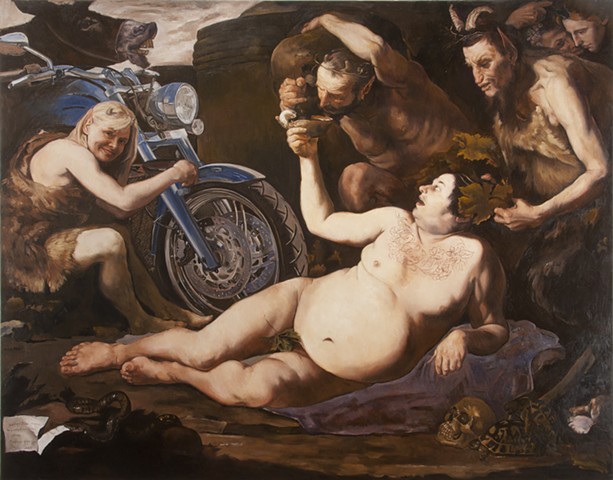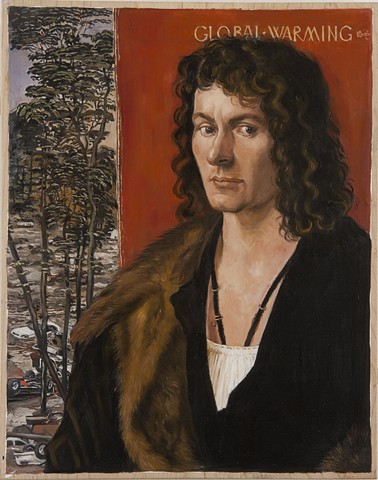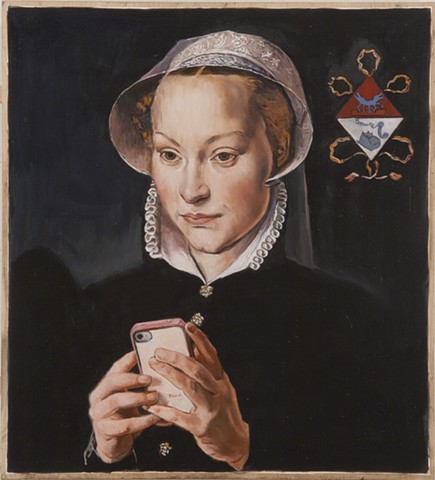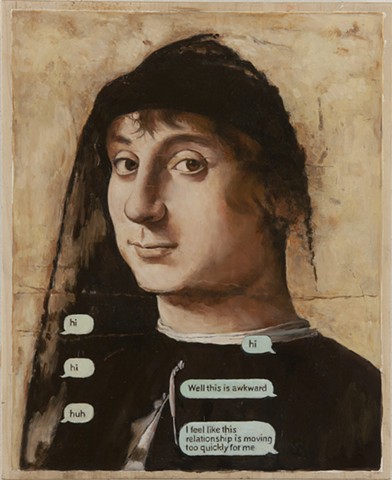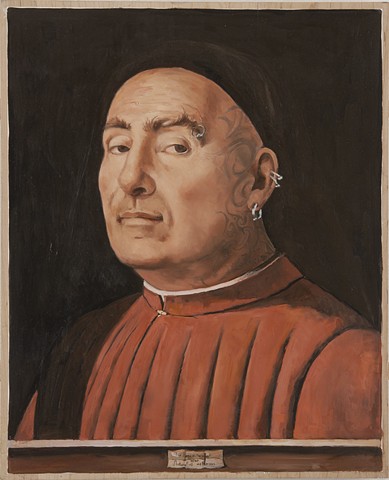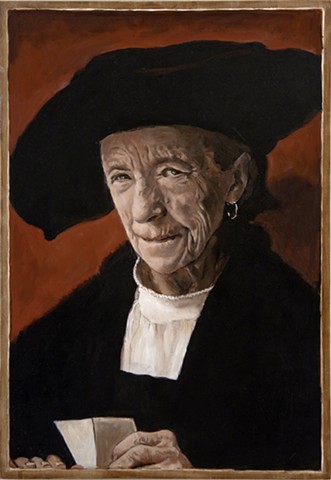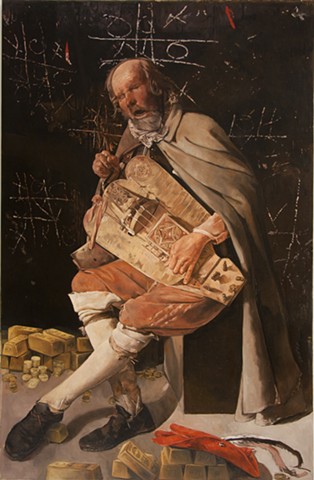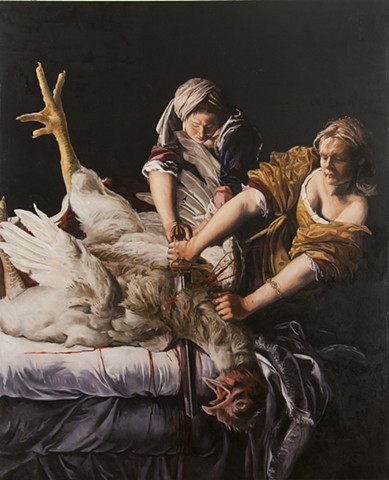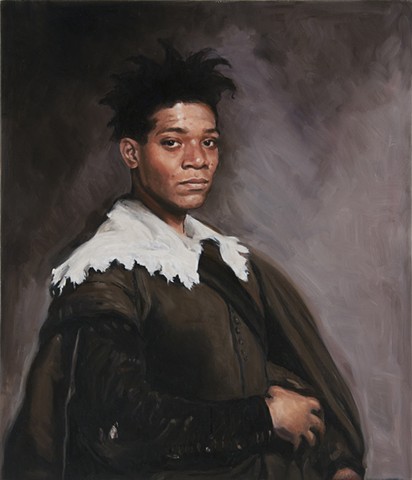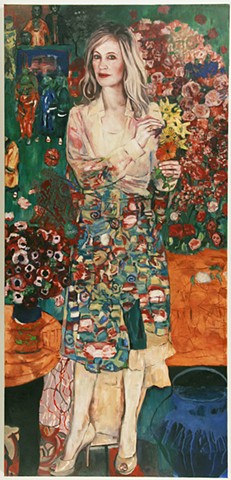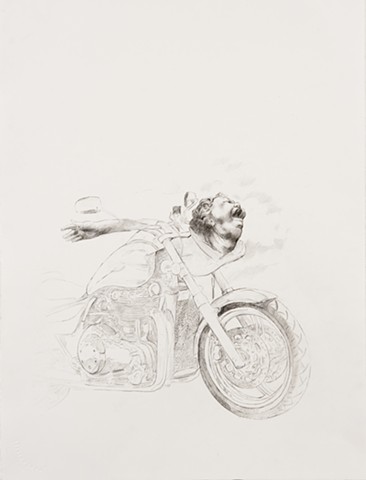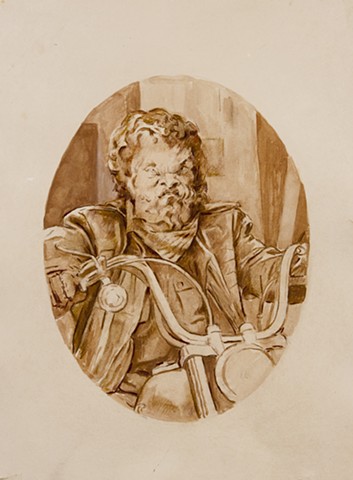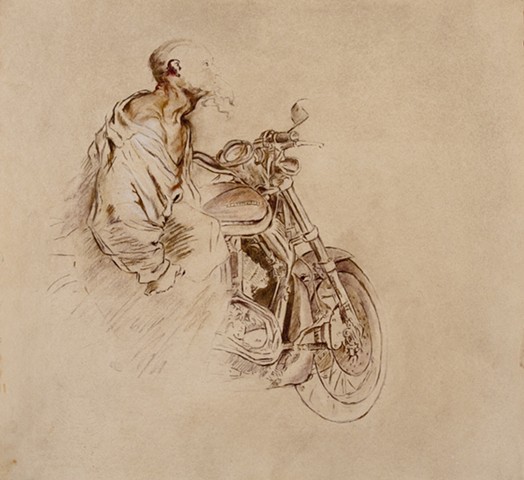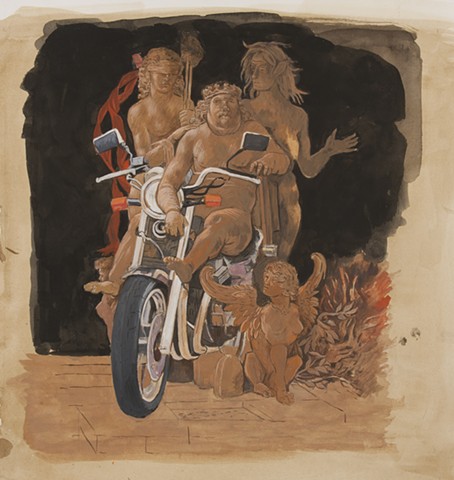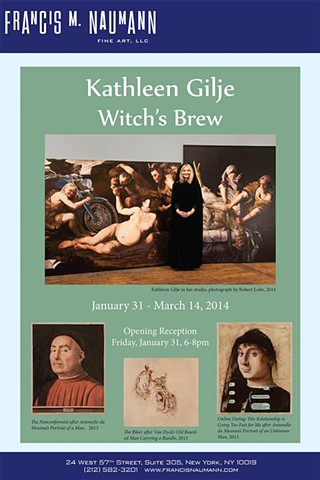Witch's Brew
Kathleen Gilje: Witch’s Brew
Francis M. Naumann Fine Art, LLC
24 West 57th Street, Suite 305
New York, NY 10019
January 31- March 14, 2014
A veteran painting restorer, Kathleen Gilje is renowned for her intricate recreations of artworks revised to provide shrewd, often humorous social commentary, while, at the same time, providing deeper insight into the historical context of the artwork being referenced. In this show, Gilje invites us all to stir the pot of time between the Old Masters and the newest inventions of the modern technological age—from a motorcycle to an iPhone—thereby allowing us as viewers to participate in her “witch’s brew.”
Witch’s Brew will feature new works in which Gilje includes herself in various guises enacting scenes from Renaissance and Baroque paintings—some based on those she conserved over the course of her former career as a restorer. Gilje guides the viewer to identify with her role as artist and living agent in the artwork to recontextualize the figures they contain as beings complete with desires and neuroses, rather than as mere allegorical symbols or vessels of painterly prowess as they are often interpreted by modern viewers. In Self Portrait Slaying a Rooster after Artemisia Gentileschi’s Judith Slaying Holofernes, 2012, Gilje appears as the agent of violence, Judith slicing off the head of a dragon size rooster, and in Self Portrait as Bouguereau’s The Assault, 2012, as the cherubic object of love, the target of paint brushes rather than arrows.
The centerpiece of the exhibition, The Birth of Tragedy after Giuseppe de Ribera’s Drunken Silenus, revises a work that Gilje restored at age twenty-four, one she grew to know intimately over many months of apprenticeship at the Museum of Capodimonte in Naples, Italy—a pivotal moment in her artistic development. In the original, an obese Silenus is fed wine by two satyrs, attended by an elf-like figure and a donkey; Gilje presents herself as a pointy-eared impish figure while the donkey rides into the scene on a motorcycle, and a tattooed Silenus’s chest reads “The Birth of Tragedy.” The painting is joined by a series of new works that provide cheeky commentary on social networking, a reprise of her signature series in which contemporary pop cultural and artistic figures are inserted into renaissance-era portraiture. The resulting works offer a more complete understanding of the original subjects as well as Gilje’s ingenious adaptations of them.
